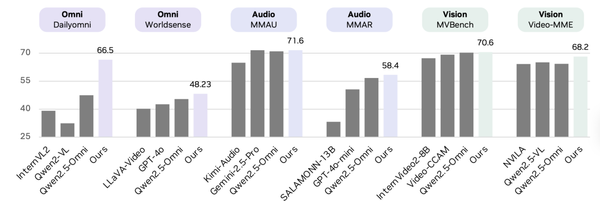# From Language to the World: Spatial Intelligence — The Next Frontier in Artificial Intelligence
When ChatGPT appeared, many thought AI was already “smart enough.” But it still can’t answer one simple question: *exactly how many centimeters are your fingertips from the rim of a coffee cup when you reach for it?*
Today, renowned AI scholar **Fei-Fei Li** published a blog explaining why: *True intelligence is not just a word game — it lies in a hidden everyday capability:* **Spatial Intelligence**.

---
## What Is Spatial Intelligence?
Spatial intelligence is older than language. Humanity’s greatest breakthroughs often relied **not on words**, but on **perception, imagination, and reasoning about space**.
Examples include:
- Ancient Greeks calculating Earth’s circumference via shadow measurement.
- Watson & Crick assembling DNA's double helix with physical models.
- Firefighters intuitively judging structural collapse in smoke-filled environments.
AI has excelled at language — yet is missing this fundamental dimension it needs to truly understand and interact with the world.

---
## Executive Summary
1. **LLMs excel at abstract knowledge** but lack spatial understanding — limiting applications in robotics, science, and immersive creativity.
2. **Spatial intelligence underpins human life** from throwing and catching to imagining novel architectures.
3. **Current multimodal AI still fails** at predicting distances, mental rotation, or basic physics.
4. **World Models are needed** — a next-generation framework with three capabilities:
- **Generative:** Build coherent worlds obeying geometry and physics.
- **Multimodal:** Take inputs from text, images, video, depth maps, actions.
- **Interactive:** Predict or recommend next states/actions in dynamic worlds.
5. **Challenges ahead:**
- New training objectives as universal as "next-word" prediction, but for worlds.
- Massive spatially rich datasets (real + synthetic).
- Architectures beyond 1D/2D — capable of 3D/4D perception (e.g., World Labs’ RTFM).
6. **Guiding principle:** AI should **augment** human ability, respecting autonomy & dignity.
7. **Applications in phases:**
- **Near-term:** Creative storytelling, film, gaming, design (*Marble* platform).
- **Mid-term:** Robotics trained via simulated worlds.
- **Long-term:** Science, medicine, education.
---
## AI’s Missing Dimension
Visual perception existed before language. It forms the **perception–action loop** powering survival and cognition. Humans use it daily for:
- Parking a car without hitting the curb.
- Catching keys tossed across a room.
- Navigating crowds without collision.
- Pouring coffee without spilling.
This fluency is instinctive — but missing from today’s AI.
---
## Why Spatial Intelligence Matters
Spatial reasoning guides:
- Scientific measurement (Eratosthenes).
- Industrial innovation (Spinning Jenny).
- Molecular discovery (DNA modeling).
It enables creative construction — from cave paintings to Minecraft. Without it, AI cannot truly **connect imagination, perception, and physical action**.
---
## State of the Art — and Its Limits
- **MLLMs** handle text + visuals but fail at:
- Distance estimation.
- Object rotation.
- Coherent long-term physical prediction.
- AI videos lose spatial consistency after seconds.
- Robotics lacks rich training data for generalization.
---
## Toward World Models: Core Capabilities
World Models must be:
### 1. **Generative**
Produce infinite worlds that obey geometry, physics, and semantic coherence.
### 2. **Multimodal**
Accept diverse inputs — images, video, depth maps, text, actions — and yield complete, consistent world states.
### 3. **Interactive**
When given actions/goals, output the **next state** and possibly the **next recommended action**, consistent with physics and narrative logic.
---
## Building World Models: Key Challenges
### **New Universal Training Objective**
Analogous to “next-word prediction” but for complex spatio-temporal dimensions.
### **Large-scale Spatial Data**
Internet visual data + synthetic depth/tactile data for rich world construction.
### **New Architectures**
Move beyond 2D token sequences to richer **3D/4D representations**.
Example: World Labs’ **RTFM** — Real-Time Frame Model — uses spatially grounded frames as memory units.
---
## Marble: An Early Prototype
**Marble** lets users generate consistent 3D environments from multimodal prompts, explore them, and integrate with creative workflows.
---
## Applications Roadmap
- **Now (Creativity):**
- Storytelling, filmmaking, game design, architecture with *Marble*.
- **Mid-term (Robotics):**
- Train robots in simulation for real-world collaboration.
- **Long-term (Science, Healthcare, Education):**
- Hypothesis testing, drug discovery, immersive training.
---
## Example Domains
### **Creativity**
- Build multi-dimensional narrative worlds quickly.
- Architects: rapid 3D visualization and walkthrough of future spaces.
- VR/XR: fully explorable interactive environments.
### **Robotics**
- Robots as collaborative assistants in labs, homes, healthcare.
- Diverse embodiments: humanoid, nano, soft-bodied, deep-sea.
### **Science**
- Multidimensional simulations for climate, materials, astrophysics.
### **Healthcare**
- Drug discovery, imaging diagnostics, responsive patient monitoring.
### **Education**
- Immersive exploration of cells, historical events, or complex skills.
---
## Principles for Development
- **Augment, don’t replace** human capabilities.
- Respect autonomy & dignity.
- Align tools with human creativity, care, and curiosity.
---
## Conclusion
Spatial intelligence could let AI **master worlds, not just words**.
Like the ancient seeds of intelligence in nature, it’s time to endow machines with the ability to perceive, imagine, and act in space — benefiting people globally.
**Fei-Fei Li’s call:** Join the ecosystem — researchers, entrepreneurs, policymakers — to make this vision real.
---
## Further Reading / Related Platforms
In the broader AI innovation landscape, platforms like **[AiToEarn官网](https://aitoearn.ai/)** offer open-source tools for AI content generation, publishing, analytics, and model ranking — empowering creators to monetize across Douyin, Bilibili, Instagram, YouTube, X (Twitter), and more.
Explore:
- [AiToEarn博客](https://blog.aitoearn.ai)
- [开源项目](https://github.com/yikart/AiToEarn)
- [AI模型排名](https://rank.aitoearn.ai)
These ecosystems can connect spatially intelligent AI breakthroughs to real-world creative and economic impact.
---





